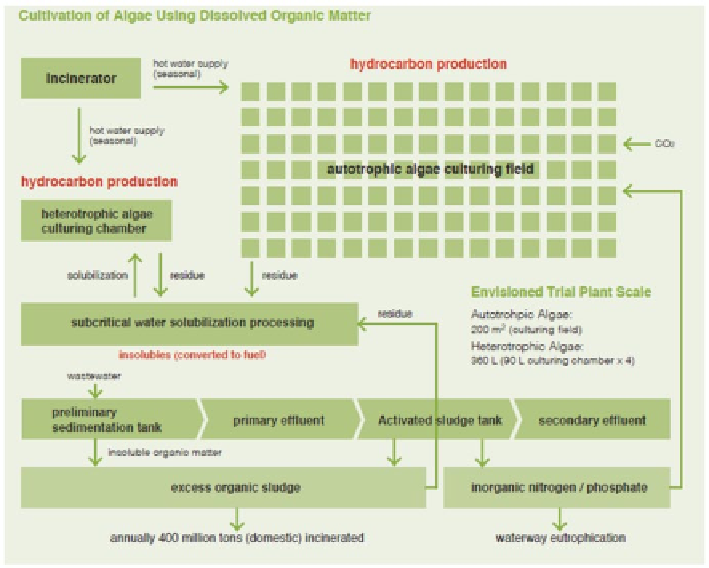Environmental Engineering Reference
In-Depth Information
Fig. 7.13
Use of sewage treatment system to produce algae. (NET
2012
)
developed applicable for future use in wastewater treatment everywhere. A concep-
tual diagram is shown in Fig.
7.13
.
The third project involves R&D to develop a world-leading local renewable en-
ergy-compatible Energy-Mobility Integrated Management System (EMIMS) which
is resilient to disasters. In the short term, research will focus on gathering informa-
tion on mobility, database systems, information integration management, informa-
tion provision and human behaviour modelling incorporating transportation mode
choices, and energy/mobility relations studies. In addition, for the EMS-controlled
DC current and capacitance system to maximize the efficiency of use of local re-
newable energy, a trial of an active signage system model to make EMS visible will
be conducted at the Tohoku University Campuses.
Such systems can be useful not only during disasters but also offer efficiency and
flexibility in day-to-day circumstances. For example, when using electric vehicles,
the battery itself can be used to store energy (e.g. from solar panels) when the car
is not in use for transport. Electricity from the EV to a home can then be supplied
when required- bi-directional use.
The renewable-energy utilizing energy and mobility integrated energy manage-
ment systems from this research can be expected to provide greater energy secu-
rity and labour savings, and more favourable economics. In normal conditions,
modelling of traffic and congestion as well as management of buses and other

